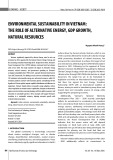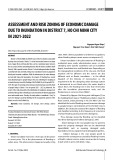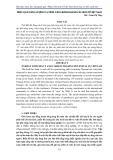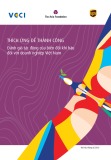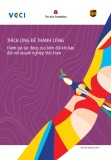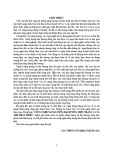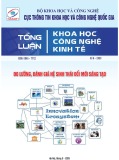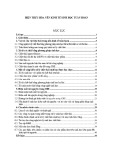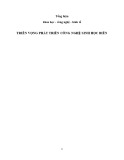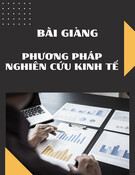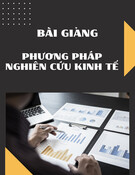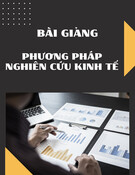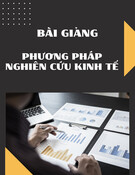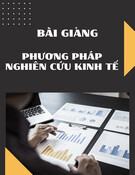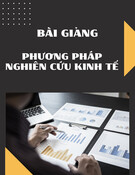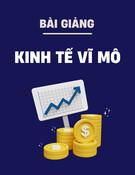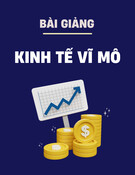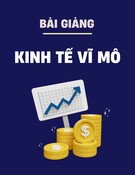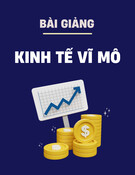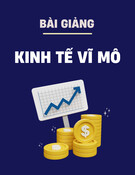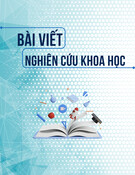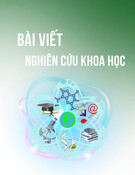
http://www.iaeme.com/IJM/index.asp 50 editor@iaeme.com
International Journal of Management (IJM)
Volume 10, Issue 3, May-June 2019, pp.50–59, Article ID: IJM_10_03_006
Available online at http://www.iaeme.com/ijm/issues.asp?JType=IJM&VType=10&IType=3
Journal Impact Factor (2019): 9.6780 (Calculated by GISI) www.jifactor.com
ISSN Print: 0976-6502 and ISSN Online: 0976-6510
© IAEME Publication
THE MODERATING ROLE OF EXTERNAL
ENVIRONMENT ON THE RELATIONSHIP
BETWEEN RESOURCE ISOLATING
MECHANISM AND SUSTAINABLE
COMPETITIVE ADVANTAGE
Purity W. Ndegwa, James M. Kilika, Stephen M. A. Muathe
Department of Business Administration, Kenyatta University, Nairobi, Kenya
ABSTRACT
Dynamic changes in the firm’s external environment influence the future direction
of the firm. The operations of the firm are affected by the striking advances in
globalization such as shifts in technology, stiff competition among business entities and
new entrances within an industry. The firms including commercial banks in Kenya
should therefore, have the ability to predict future trends in the external environment
for survival. The main purpose of this study was to establish the moderating role of
external environment on the relationship between resource isolating mechanism and
sustain competitive advantage among commercial banks in Kenya. Descriptive and
explanatory research design was employed in the study. The research targeted all the
commercial banks in Kenya. Purposive sampling was used to select a sample of 160
respondents from the key departments of Finance, Sales and Marketing, Strategy and
Operations of all the forty (40) commercial banks’ headquarters in Nairobi, Kenya. The
data collection instrument used was semi-structured questionnaire. The variable
characteristics were summarized using descriptive statistics. Agreement to the most
frequent responses to the statements on the study variables ranged between moderate
and high extent. Based on results of hypotheses testing, external environment have no
moderating effect on the relationship between resource isolating mechanism and
sustainable competitive advantage.
Key word: Resources, Isolating Mechanism, Competitive Advantage, Sustainable
Competitive Advantage, External Environment.
Cite this Article: Purity W. Ndegwa, James M. Kilika, Stephen M. A. Muathe, The
Moderating Role of External Environment on the Relationship Between Resource
Isolating Mechanism and Sustainable Competitive Advantage, International Journal of
Management, 10 (3), 2019, pp. 50–59.
http://www.iaeme.com/IJM/issues.asp?JType=IJM&VType=10&IType=3

The Moderating Role of External Environment on the Relationship Between Resource Isolating
Mechanism and Sustainable Competitive Advantage
http://www.iaeme.com/IJM/index.asp 51 editor@iaeme.com
1. INTRODUCTION
The concept of sustainable competitive advantage arising from both resource isolating
mechanism and resource capability is an input that requires an entity to consider its external
forces (Meyer, 2009). This should be in line with both theoretical and empirical literature that
give complementarities between the RBV approach and the institutional perspectives to the
study of organizations in addressing their competitiveness (Kilika, 2012). The forces in the
external surrounding of the business can influence the entity’s strategies, future direction of the
firm and the business situation within an industry (Thompson, Strickland & Gamble, 2007).
Changes in technology and government regulations affect the future direction of the firm
(Ndegwa, Kilika & Muathe, 2018).
Dynamic changes in the environment are very fast in creating new opportunities and threats,
therefore, firms must determine which factors in the environment present opportunities and the
ones which create threats for greater accomplishment of the firm’s objectives and strategies
(Prasad, 2010; Cole 1997). The environmental analysis provides the company’s real situation
that is, whether it is healthy or unhealthy (Thompson, Strickland & Gamble, 2007). Competitive
advantage relates to the firm’s ability to match internal capabilities and strengths with the
opportunities available in the industry and external environment (Grant, 2010). Firms should
combine firm’s complimentary resources and innovation to yield sustained competitive
advantage (Hazen and Byrd, 2012).
Striking advances in globalization, and the external business environment such as shifting
of social values, technology, changes in labour force among other shifts have created a
challenging environment for organization’s day to day operations (Daft, 2012). This is
attributed by pressures as a result of stiff competition among rival firms and new entrances in
a particular industry (Thompson, Strickland & Gamble, 2007). Management should therefore
be able to predict demand for products or services in their respective markets in order to produce
quality products and services that meet consumers demand (Barney, 2007).
Effective management executives should be able to understand the importance of existing
external environment to make important strategic decisions (Sababu, 2015). Organizational
change is therefore required in order to maintain equilibrium between various external and
internal forces to achieve organizational goals (Prasad, 2010). Firms should consider
incorporating sustainability of competitive advantage in their business strategy due to external
environmental forces and consumer changing demands (Iberg, 2015), for changes in the
external environment can create opportunities and threats for a firm and dictates the types of
products to be developed (Rothaermel, 2008; David, 2013).
Increased political and regulatory framework have made the banking sector to experience
serious challenges which are associated with global uncertainty (Barclays PLC Annual report,
2014). Internal forces emanating from stakeholders and external forces resulting from the
government pressures, customers, competitors, NGOs and the society within the banking
industry force banks to integrate daily sustainability practices and corporate policies (Jeucken
& Bouma, 1999). All the banks are required to maintain a minimum liquidity ratio and cash
reserves with Central Bank of Kenya (Cytonn, 2016). The main objective of this study
therefore, was to determine the moderating role of external environment on the relationship
between resource isolating mechanism and sustainable competitive advantage among
commercial banks in Kenya.
The findings of this study provides insight to the managements of the banks and other
sectors on the importance of external environment in sustainability of competitive advantage.
The study findings can also be used by the government and policy makers in the developing
nations in development of strategies. The study contributed towards filling of the information
gap on the subject matter which is useful for future research. The study also contributed to the

Purity W. Ndegwa, James M. Kilika, Stephen M. A. Muathe
http://www.iaeme.com/IJM/index.asp 52 editor@iaeme.com
existing body of knowledge, which can be used as reference point by academicians, scholars
and researchers.
2. LITERATURE REVIEW
The section specifically reviews conceptual and empirical literature in view of pointing out
research gaps and highlights the existing theories in regard to management characteristics
explored by scholars. The study sought to establish the moderating role of external environment
on the relationship between resource isolating mechanism and sustainable competitive
advantage.
Institutional theory of organizations emerged from Philip Selznick in 1948, whereby he
noted that organizations have their own life cycle and are created to achieve goals. Institutional
theory model views organizational structures as a means of shaping the organization’s
characteristics in response to the changes in the external environment (Tosi, 2009). Institutional
theory of organizations provides a multifaceted view of firms and argues that firms are
predisposed by normative pressures, from either internal or external sources (Zucker, 1987). It
is a concept that best captures the process of homogenization and this enable the characteristics
of the organization to be modified in the right direction which is compatible with the
characteristics of the external environment (DiMaggio & Powell, 1983). From an institutional
perspective, the most important aspect of isomorphism interaction with environmental
institutions is the evolution of organizational language (Meyer & Rowan, 1977).
Institutionalization is a process concerned with creation of social reality whereby there are
social orders in an organization and each individual actors takes action (Tosi, 2009).
Institutionalized products or services, techniques, policies, and programs and function are
powerful myths (Meyer & Rowan, 1977). Institutions have cultural or discursive dimensions
and also structural or organizational ones (Meyer, 2007). Organizations that omit
environmental legitimated elements of structure or create unique structures lack acceptable
legitimated accounts of their activities (Meyer & Rowan, 1977). Institutional isolating
mechanism can also be involuntary and exogenous and exist when otherwise accessible
resources and capabilities that support a competitive advantage are rejected if they fail to fit
with prevailing cultural norms or political interests (Oliver, 1997).
Srivastava, Franklin, and Martinette, (2013) sought to analyze cross-industrial best practices
and future trends in the context of the contemporary resource based competitive advantage
model of the firm. The study used online survey within a typical Hi-Technology company.
Thirty three questions requiring graded or multiple-choice answers was issued to respondents.
The main aim for the questionnaires was to collect data on the quantitative assessment or
relative feedback in areas considered to play very important role in building or sustaining a
firm’s competitive advantage. The findings indicated that high-tech firms sustainable
competitive advantage was dependent on agility and customer centric approach further,
engagement of new employees improved market viability and an investment in the necessary
infrastructure to secure a deeper level of mutual trust with the firm’s key customers.
The study concluded that longer-term perspective in building resources and capabilities that
has entry barriers against competitors were essential for firms. In the long run such barriers
would ensure the few players are exposed to opportunities, among them technology which
ensure high business margin and security of sustainable competitive advantage. Once attained,
these higher levels of trust and differential technology can open up opportunities of maintaining
a higher margin business and so securing a sustained competitive advantage. The study also
found that there are other forces in the firm’s external environment such as globalization,
digitilization, partnerships, joint ventures and de-regulations which creates barriers for
companies to compete effectively. From the result findings, the study recommended for future

The Moderating Role of External Environment on the Relationship Between Resource Isolating
Mechanism and Sustainable Competitive Advantage
http://www.iaeme.com/IJM/index.asp 53 editor@iaeme.com
research on this area in order to gain a deeper understanding of the relative influence of these
factors on a firm's ability to remain competitive in the longer term (Srivastava, Franklin, &
Martinette, 2013).
Ong and Ismail (2008), study sought to establish the relationship between information
technology competence and sustainable competitive advantage, where the focus of the study
was on the resource based view on SMEs in Malaysia. The unit of analysis was SMEs whereby
data was collected through various methods from the selected sample. A total of 2572 personal
emails were sent to respondents of which 1575 successfully reached the respondents but only
152 respondents responded. The study established that there existed a relationship between
information technology competence and sustainable competitive advantage. The study further
recommended that firms continuously renew their ICT competencies to sustain the competitive
advantage of the firm.
Conceptual Framework
The conceptual framework on figure 1, illustrates the direction of the relationship between study
variables: Resource isolating mechanism, external environment and sustainable competitive
advantage.
Figure 1 Schematic Diagram (Source: Author (2017)
Independent Variables
Dependent Variable
RESOURCE ISOLATING
MECHANISMS
SUSTAINABLE
COMPETITIVE
ADVANTAGE
Product
differentiation
Cost leadership
Organizational
responsiveness
EXTERNAL
ENVIRONMENT
Political pressures
Social/cultural
pressures
Technological
changes
Government laws and
regulations
Economic factors
Economic Deterrence
Capital investment
Unique business
processes
Intellectual property
rights
Identification of Rival
Competitive Advantages
Benchmarking
Competitors strength
and weaknesses
Cross-company
comparisons
Competitors’ moves
Exploitation of
Opportunities
Identifying unique
opportunities
Relationship with
stakeholders
Strategic positioning
Customer
segmentation
Moderating Variable
H01
H02
H03
H04

Purity W. Ndegwa, James M. Kilika, Stephen M. A. Muathe
http://www.iaeme.com/IJM/index.asp 54 editor@iaeme.com
3. RESEARCH METHODOLOGY
This study used descriptive research design and explanatory research design. Descriptive
research design enable the researcher to ascertain and describe the characteristics of the
variables Sekaran (2003). According to (Kothari, 2009), explanatory research design further
builds on the descriptive design and enables further discussion on causal effects of the variables
under study
The population of this study was all 40 commercial banks in Kenya and the respondents
were managers of key departments at their headquarters in Nairobi, Kenya. The study used
primary data which was collected using semi-structured questionnaire which contained both
open-ended and close-ended questions. The research instruments was validated in terms of
content and face validity. The researcher measured the reliability of the questionnaire to
determine its consistency. The results of reliability analysis showed that the Cronbach Alpha
was 0.728 for external environment. The closer Cronbach’s alpha is to 1, the higher the internal
consistency (Sekaran, 2003; Weiner & Hopkins, 2007). As a rule of the thumb, reliability value
of 0.7 and above is recommended for it showed reliability of the instrument (Robert, 2006).
Quantitative methods, data analysis involved computation of both descriptive and
inferential statistics using Statistical Package for Social Sciences (SPSS). The research
hypothesis was tested at 95% level of confidence in order to provide for drawing of conclusions
that if the p-value is less than 5%, the null hypothesis was rejected and the alternative hypothesis
was accepted. If p-value was greater than 5%, the null hypothesis was not rejected and the
alternative hypothesis was rejected. Pearson’s product movement correlation (r) was derived to
show the nature and strength of the relationship. Coefficient of determination (r2) was used to
measure the amount of variations in the dependent variable explained by the relationship
between variables.
Moderation effects explained how external environment influenced the relationship
between resource isolating mechanism and sustainable competitive advantage. Significance of
the effects of the moderating variable was determined from the corresponding p-values.
Consequently, the p-values was used to test hypothesis. Moderation test involved determining
whether the coefficient for the interaction term was significant.
4. FINDINGS AND DISCUSSION
This section presents the study findings which include the bio-data of the study responses, the
descriptive analysis and the inferential analysis of the study. A total of 160 questionnaires were
administered to respondents who comprised of managers of selected departments in all 40
commercial banks in Kenya. 129 dully filled questionnaires were collected from respondents
a response rate of 80.63%. Most of the respondents were experienced, skilled and
knowledgeable since they had worked in the bank for more than three years. Also the academic
qualifications of most respondents was of degree category implying that they were in a position
of interpreting research questions.
Table 1 Variable Characteristics
Variable
No of Items
α Score
Mean
Standard
Deviation
Economic deterrence
129
0.856
3.91
0.81
Identification of rival competitive advantage
129
0.888
3.97
0.80
Exploitation of opportunities
129
0.841
4.21
0.70
External Environment
129
0.728
3.61
0.92
Sustainable competitive advantage
129
0.905
3.94
0.82
Overall score
0.844
3.93
0.81


